Alone
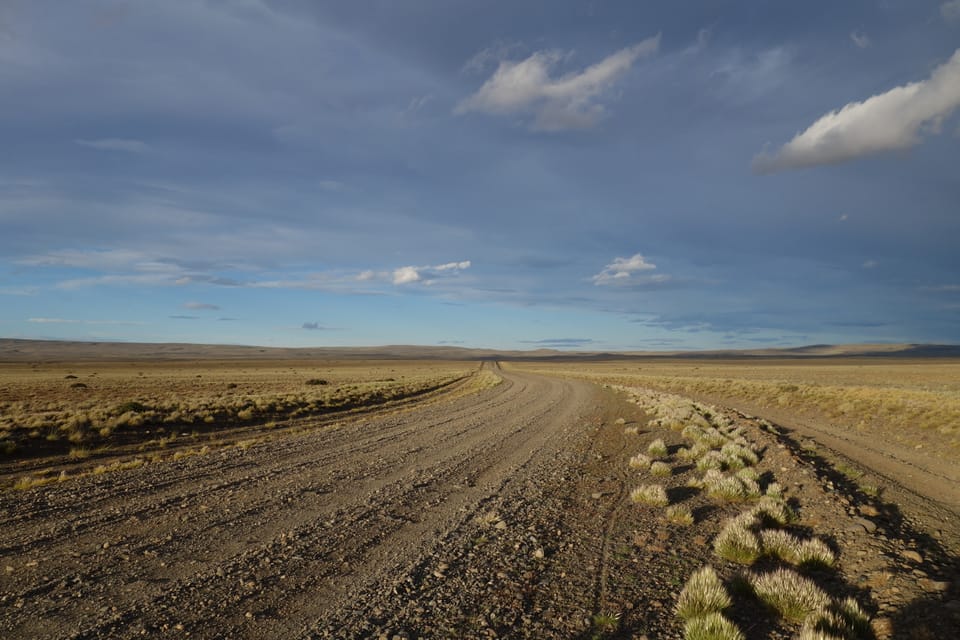
Settle into a sofa or an armchair, something soft. Isolate your ears and listen to any of Bleachers’ Take the Sadness Out of Saturday Night, The Vaccines’ Pick-Up Full Of Pink Carnations or Maggie Rogers’ Overdrive. If you want my pick, take the middle one. I bloody love The Vaccines. Apple tells me I’ve exceeded volume limits. I blame the wind.
Out of an unconsidered sense of solidarity I haven’t left. 6am was the aim, 6:30 the likely compromise, and now it’s 7:30. The Sun has risen. A puncture is like THAT exam: you’ve been so frantically efficient and yet what, you swear, was just ten minutes has exploded before you. Except there’s an important difference: you can and must finish. A puncture gobbles time. Celian is done. I head out onto the street and snap photos of Cyril and he set off to God knows where. Somewhere south. 75 days from Bogotá to here, Chos Malal, “We’re almost there” being Ushuaia. They round the corner and I follow, trapped by the one-way system into this awkward tailing. No awkwardness to be had, they’re gone. I turn north, back out into the desert.
They’re real cyclists. It’s easy to explain with limited vocabulary. It’s a game of “heads, shoulders, knees and toes” translated to “arms, chest, thighs and calves”: “nada, nada, grande, grande”. They’re cycling big distances; Cyril wants to ride the final 400km to Ushuaia in a single push which, simply, is filthy. A friend of theirs was seriously injured in a road incident; they’re riding for him and others. I thought Celian was joking when he replied that Monster is their fuel but he pulls out a can the morning he discovers the puncture. Their dentists must despair.
For a change my shadow is laid out to my left, creeping the full width of the road and off into the brush and dust, the brown and suppressed greens and yellows. It is my loyal companion as I pedal at a smooth cadence in accordance with this still morning: the wind is yet to build but surely as the Sun rises the Wind will learn to suck you dry by the the afternoon. You’ll arrive with a convergent mountain range of salt across your jersey’s back. You’ll rinse and hang to dry, have a bite to eat, find shade and lie down to siesta on a foam pad whose dimples will be sweat-filled when you rise to rinse, eat and sleep again. This is the pattern for the next 5 days. Welcome to Argentina.
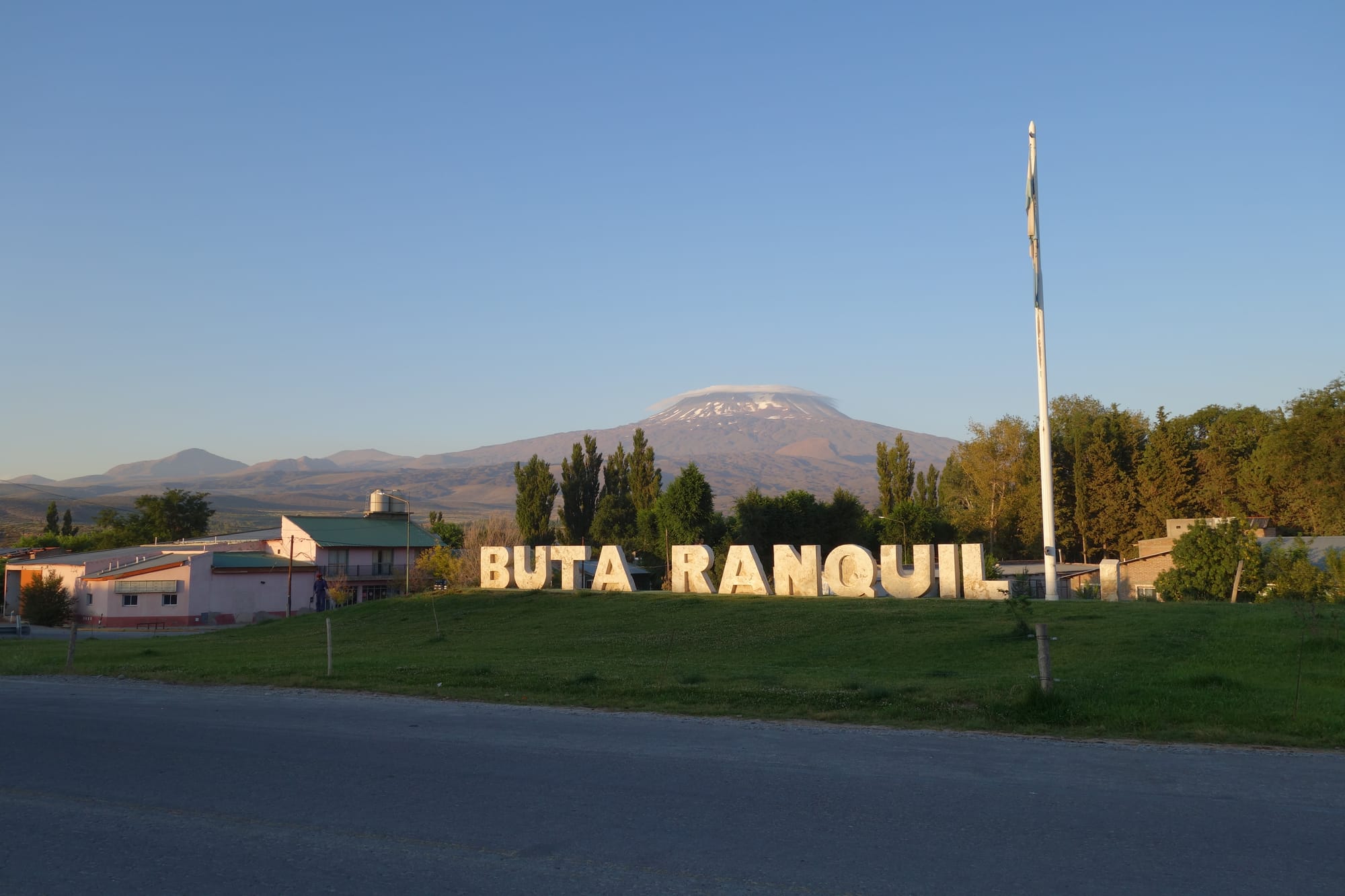
There are many ways to cycle tour - or “bikepack”, select your preference - and on one axis there is a binary choice: with or without. With companion or without. Plenty of us go alone but few of us would disagree that together is better. Cycling the Carretera Austral, a simple paradise compared with the current brutal conditions that primed Chile for a spate of forest fires, was a young Italian, Filippo. He was riding solo and we met him on the Hornopiren ferry when he was employed as the chief translator to round up all cyclists for a sketchy flatbed loading of our bikes: the journey is broken in two with a 20km gravel stretch between and sometimes there isn’t sufficient time to cycle the interlude. We’d see him at various times thereafter but then he disappeared only to reappear in time to make the same crossing to Argentina. It transpired to be his first such solo trip and his girlfriend was meeting him in Argentina so we asked him if he’d do it again. He visibly demurred. His white man afro quivered, he glanced down at his high-end outdoor gear bedecked chest, legs, feet. He shuffled and replied, a self-amused smile accompanying, “No.”
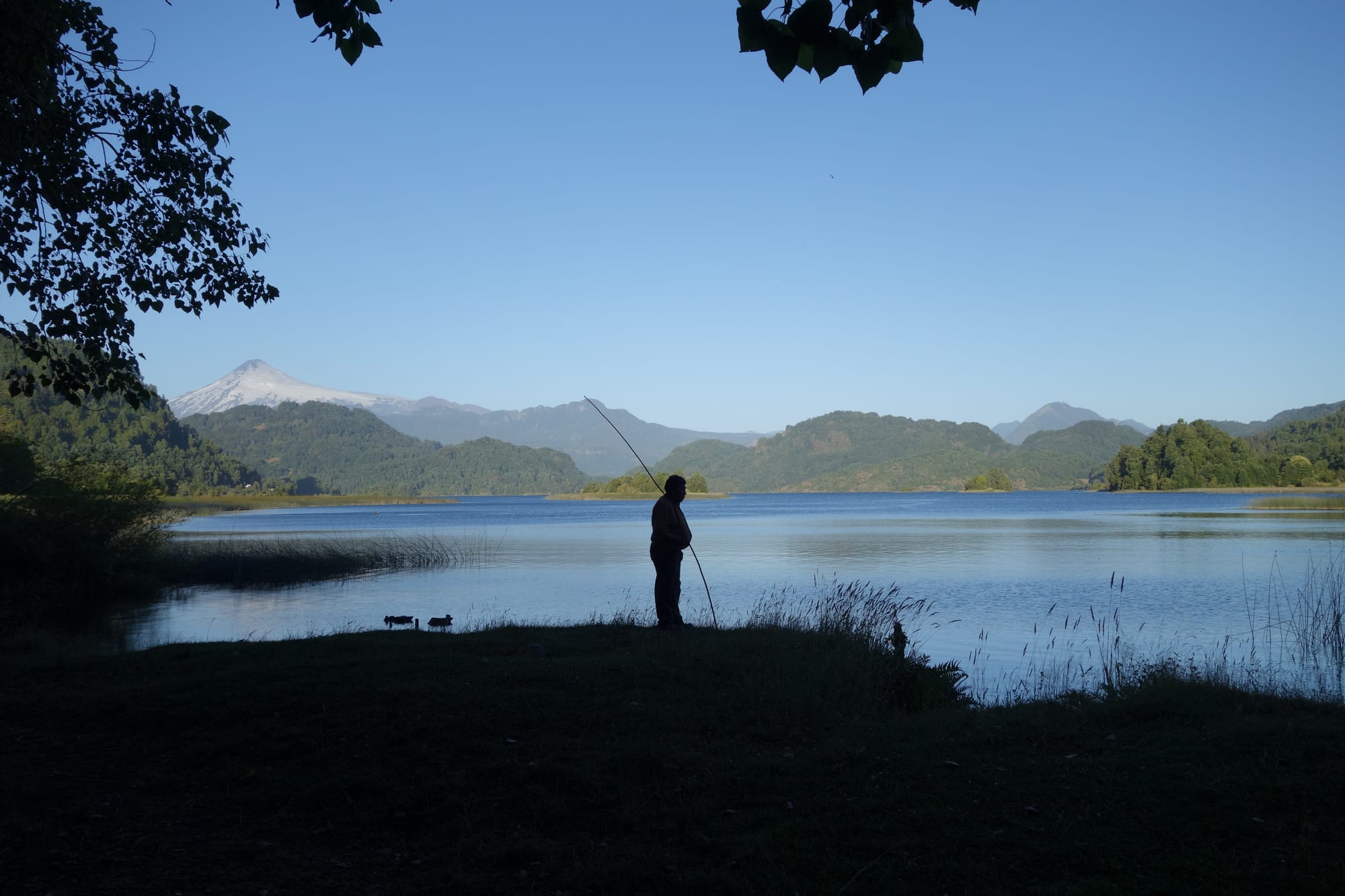
And yet, for all the strange loneliness, there is a certain beauty to the lone adventure. I’m at a tranquil campground on the north bank of Rio Maule. It was established by Marco and his French girlfriend Helene a few years ago when the Belgian landowner, Dmitri, supported their vision of creating the camping experience they would want to visit on their travels: no speakers allowed and no piercing overhead lights that give tent dwellers the strange sensation of overnighting in a nuclear power plant; loyal to his homeland Dmitri brews beer (varieties include the appropriately named Simple, Doble and Triple, no prizes for how they relate) that they sell along with delicious fruit juices and pizzas that, for once, resemble a pizza; the facilities are well conceived, and there’s a volleyball court that they themselves use in the late afternoons and encourage participation. There was a father here when I arrived with his young son and younger daughter, inquisitive as they are with eyes large and fringes flopping they wanted to ask why I’m cycling. Huh. Yeah, good question.
You travel slower, you see the space between, you can eat more, drink more, live more. And it’s cheaper. It’s not free. It’s “libertad”, the father interprets for his children. It’s freedom.
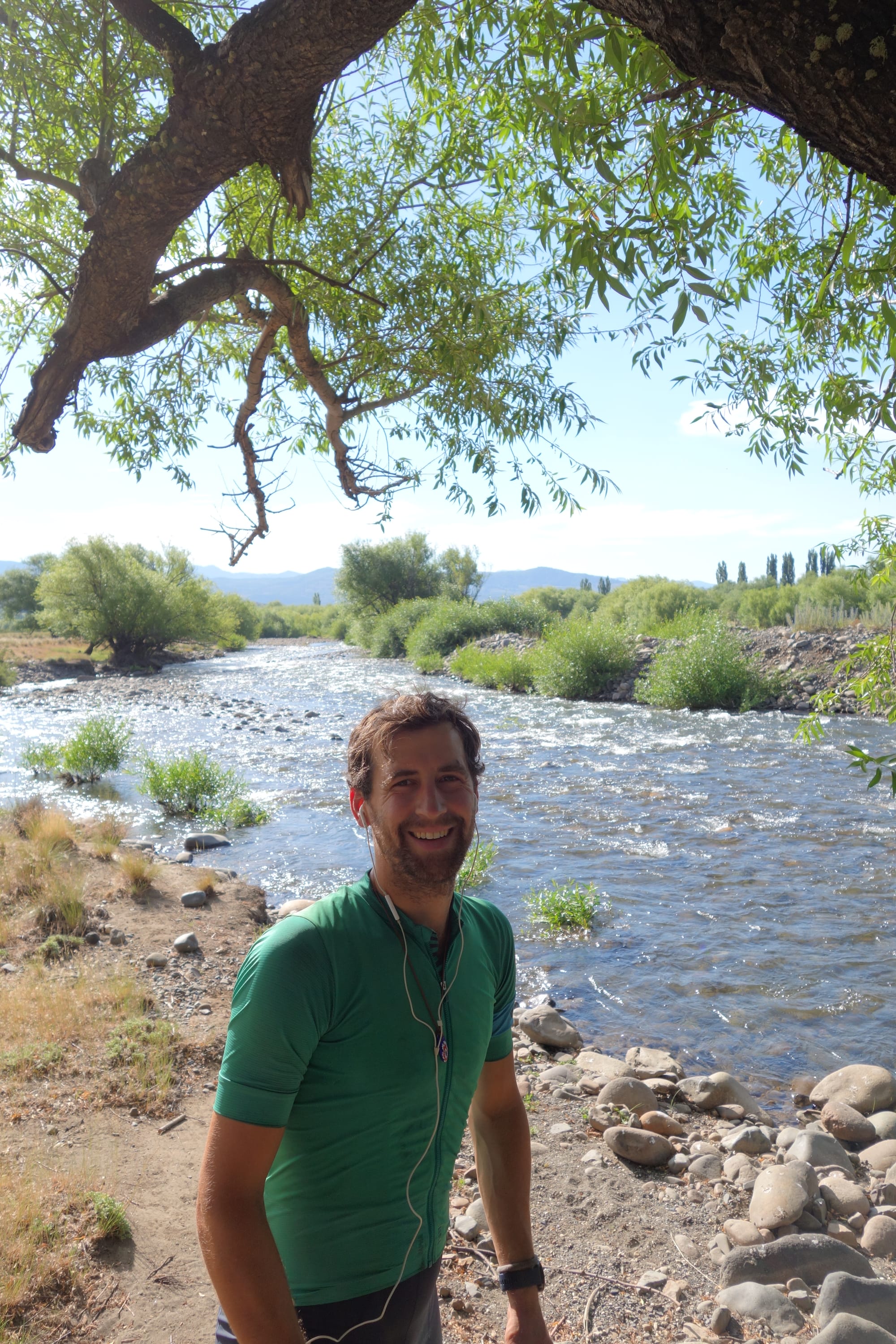
But alone? It’s strange. There’s a big South America cycling WhatsApp group. I post far too frequently and answer my own questions. “Can I take a bike on the Talca to Constitucion slow train?” What have I become? Maybe it’s encouraging that no one replies; am I forging my own path, the road less travelled by? Or am I just asking dumb shit? (Someone’s just been booted from the chat; if I’m lucky I’ll meet the same fate.)
Before setting out I’d spammed people for book recommendations. A Kindle is a more nourishing companion than a shadow. G gave me Jenny Graham’s “Coffee First, Then The World”; I finished “The Best of A.A. Gill”, ripped through Bruce Chatwin’s “In Patagonia” on the Carretera, was engrossed and perturbed by L’s suggested “Collected Works” and now I’m reading about the destination I didn’t reach, another J recommendation, Lucas Bridges’ memoir-cum-history of Tierra del Fuego. My “papa” is phenomenal at selecting books. Tomas Nevinson, Barcelona Dreaming, The Broken House, An Impeccable Spy. The Opposite of Loneliness.
The title essay is not long. Marina Keegan’s writing is far more digestible than this rambling mess. It achieves. (Note: I was going to write this weeks ago when I was in a productive, emotive headspace but… we’ll get to the But.) Maybe I’m here paradoxically searching for that Opposite of Loneliness. For sure I am not “settling for continuance”, I want to break with my encumbering luggage of self-perceived failings and “BEGIN a beginning.”
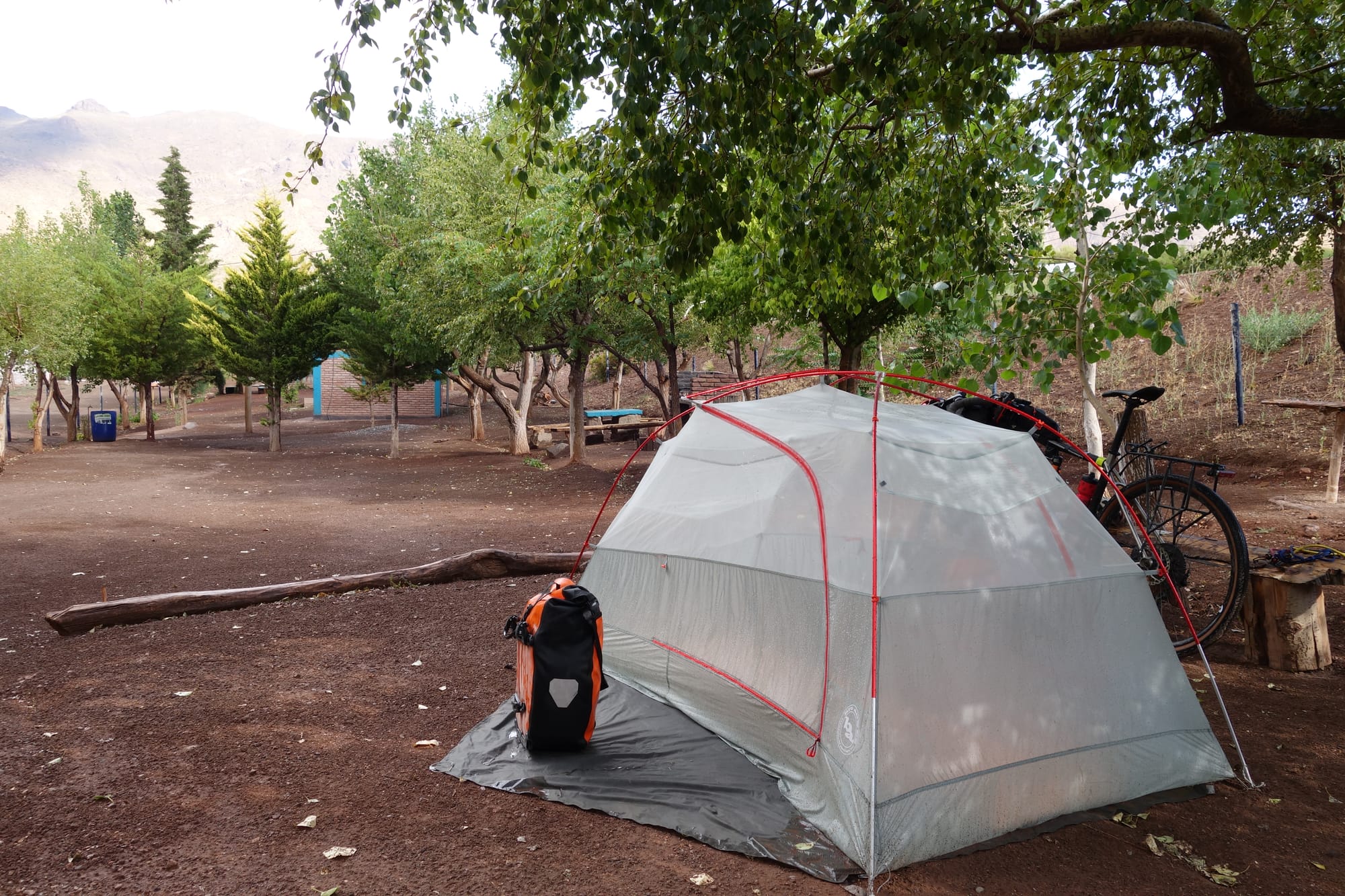
There’s a cyclist out there cycling around the world. He’s called Boru. I don’t know him personally. His Mind Map videos are… they touch the soul of what this is. Solitude and loneliness are the two sides of this coin: you flip, you flop, and you flip again.
You have a heightened sense of ridiculous perception. The first afternoon alone out of El Calafate, cycling through the unforgiving Patagonian Steppe, I fortuitously took the rough gravel road cutting south-west, for ordinarily taking the long way around, a south-east run followed by due west tacking tarmac route is optimal but the conditions favoured the bumpy “short-cut”. This road eventually sinks down into the plateau and along its south-eastern bank, in your line of right, you’re presented with curvaceous bobbles of massed earth decorated by the rough grasses that the time of day has smoothed to gently graded under-saturated tones. But where these bulbous lumps meet they sink right back into dark fissures. It’s obvious. What you have before you is a series of builders’ arse cracks. It’s Bum Crack Canyon.
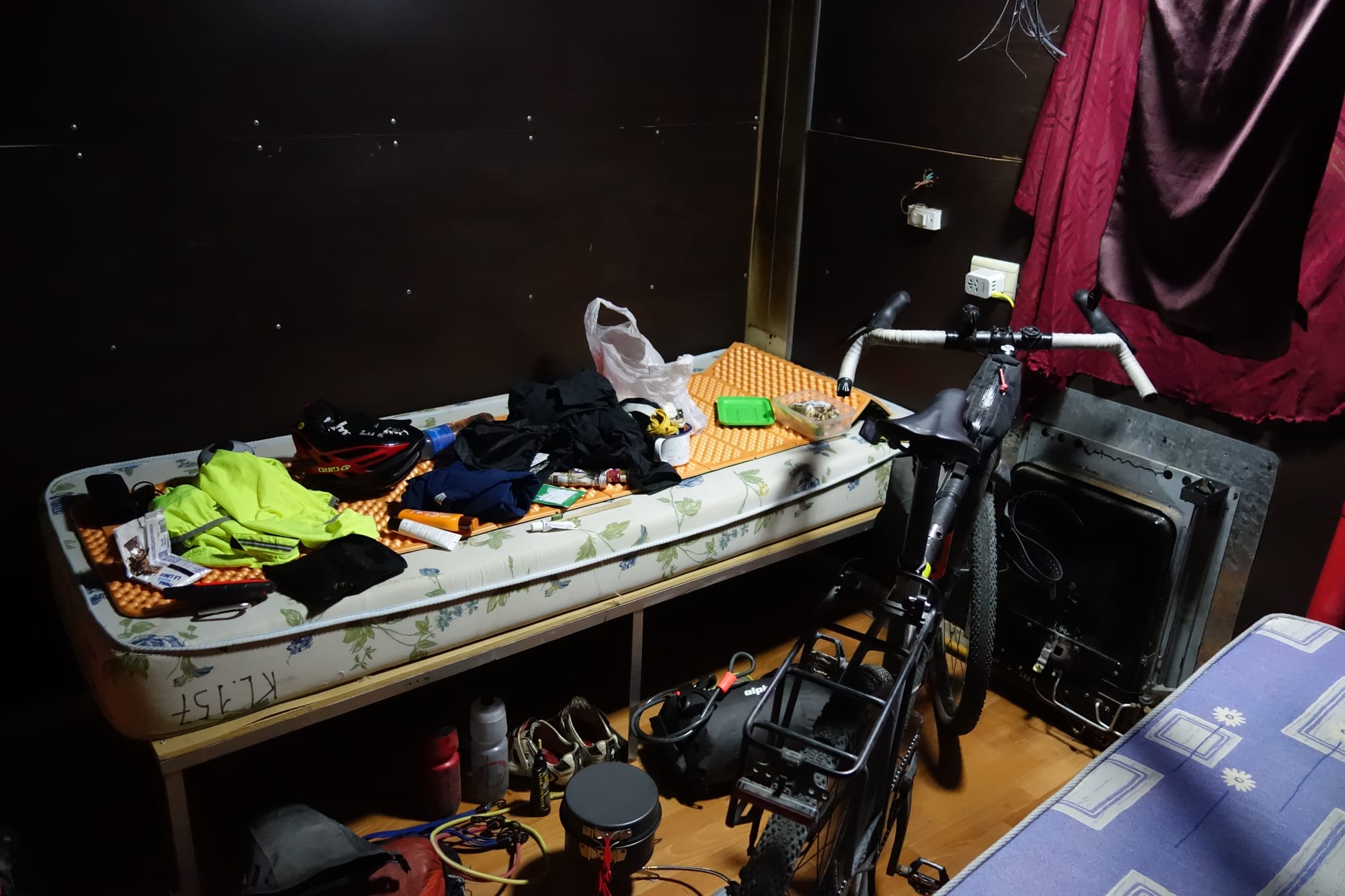
In Chorriaca, a village that sits halfway between the Argentine towns of Las Lajas and Chos Malal in Neuquén Province, I have hours to while away in the afternoon heat, waiting for nightfall. An incredibly long-legged bird, in no other ways distinct from a pigeon, stalks its way down the central boulevard (yes, I realise it’s strange to associate “boulevard” with “village”). Its movements are robotic. And I have this thought that chickens are so robotic, their movements seemingly preprogrammed to strike food or dirt with the discrimination of the Horizon code. And when a man appears out of the school that neighbours the telephone building I’ve crashed I can’t later forget his get-up of espadrilles, grey sweat shorts, River Plate tank top with a trucker cap in matching red and white, and Bole sunglasses that look kids-sized. When a date later invades my picnic bench fortress I count 13 benches and 2 picnic tables in the boulevard’s centre. I learn that the school has 80 children but there’s barely a soul to be seen here. Nothing makes sense here. There’s an ATM in its own dedicated building with a proud Red Link logo carved and painted onto its concrete, but there are only two shops and neither sells a stable selection of goods. This telephone building has a well-kept lawn, so long as you mind the fossilised and fresh dog poop, and painted brick walls mark its exterior, and yet it only appears used by rogue cyclists and pre-teens on dates. The gravel roads are well-kept, the pedestrian paving is in pristine condition, a series of large rock slabs cemented together, and there are storm drains. This is the middle of the desert and there’s zero indication of industry. There are streetlights that will come on at night and allow you to charge from a socket towards their base, and there’s a kids playground, colourful in primary colours, at the bottom end of the boulevard, a police station at the top. I first noticed Chorriaca from 25-30km out, but I sense that Chorriaca has not noticed itself. With increasing incongruity a black sausage dog appears and waddles over and barks at me. The dogs are taking themselves for a walk. I never see the residents but I hear them all from midnight until 6am.
At El Cajón Grande, home to hot springs penned in on all sides by steep mountainsides topped with columnar volcanic formations, I sit myself in the cold stream under the high sun - no one is daft enough to enter the hot pozas at this time. A father walks past trailed by his two young daughters, seemingly on some mission. Once I notice he’s missing a slider I deduce that they must be searching for if. Good luck. And then I’m scratching my head wondering how they imagine it would have wedged itself under any of the rocks they’re lifting. Maybe they seek oysters instead. Another father rushes his son down the bank, the boy spasming and spewing. It’s understood that it’s the Sun’s work, and they rest him on an unshaded bench. That’s logic. In the evening I sit with new friends in the coolest of the pools and we watch a pair of gauchos herding horses on the almost vertical slopes. A French tank of a campervan muscles into the parking area above us and soon I’ve learnt the French and Spanish for “owl”.
A recurrent feature of any major junction, landmark or town on the Ruta 40 is a Las Malvinas sign. But what really tickles are the copy and paste jobs. You learn to not trust road signage distances. And then there was the aerodrome sign in the middle of nowhere. Craning left, right, front, back, there was nothing, nothing aside from the usual scrub, not a landscape you’d want to land any craft you’d like to reuse. And then the realisation hits. There was no indication of distance to or direction of this aerodrome. You are riding the runway.
Before crossing Rio Barranca, thereby officially leaving Patagonia (a month after I thought I’d been rid), I play a game of “can I use the bathroom without appearing desperate” at the tourism information building. And I win, handsomely, invited in to use the bathroom with no preamble, just me looking a tad lost on the only road for miles.
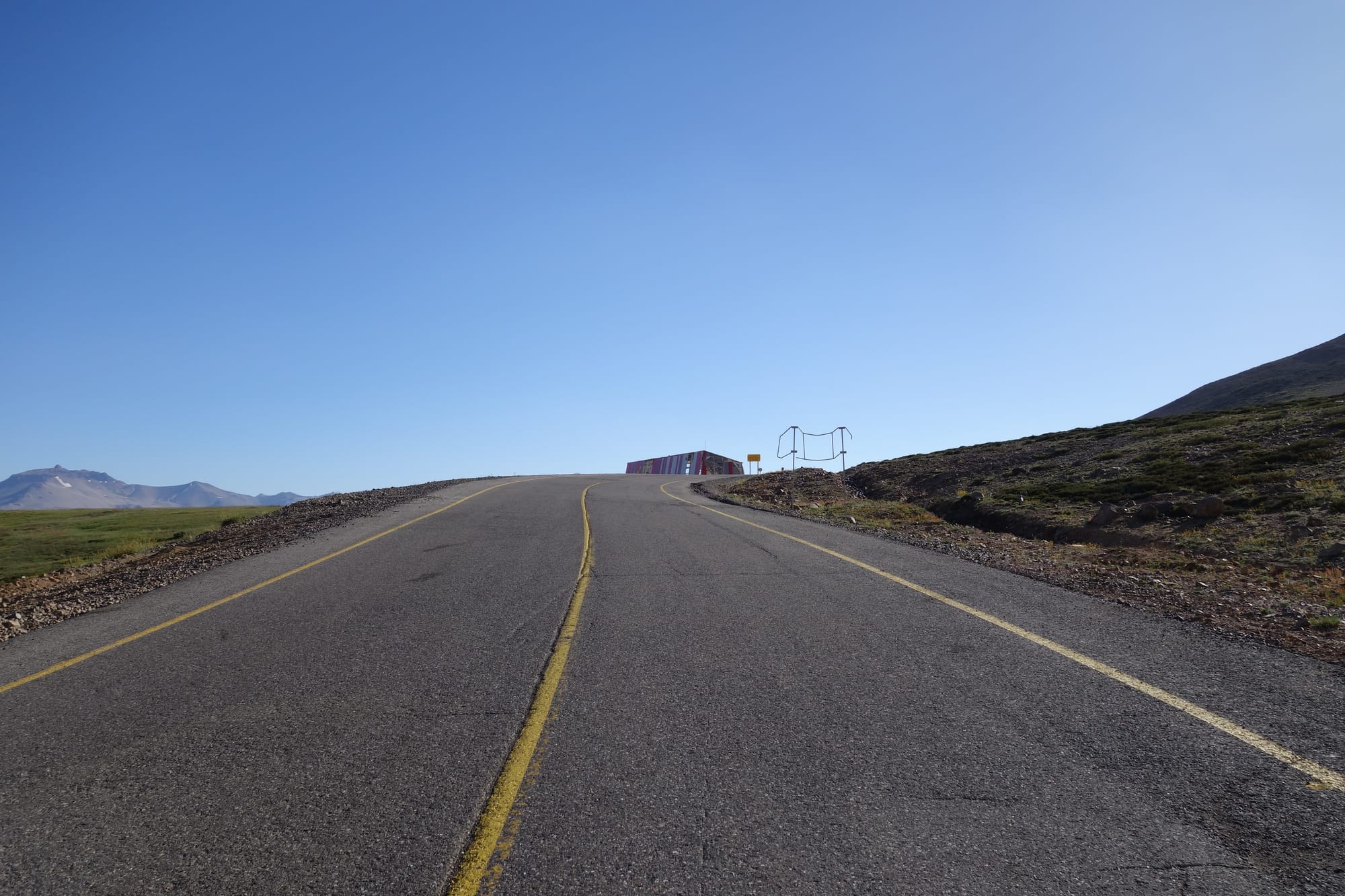
There are two explanations for why I’ve taken so long to write what I was much better minded to do weeks ago. One is something perhaps about having a restless ambition. Staying still is hard. Something about cycling the length of South America having been repeated oft enough as catchy became binding. I sometimes think that I should have stayed institutionalised, joined a “firm”, applied ambition to no purpose other than itself. Fortunately this has been overcome. I’d love to visit Ecuador, Colombia and Mexico, in my lifetime. But now I’m going to take that train to Constitucion.
And the other is that, for all the time in the day that I’m alone, as soon as I stop I rarely am.
Descending off Paso Pino Hachado I plug in and turn up the volume, The Vaccines, Sometimes I Swear. Rolling at 60kph+, I pedal. Despite the heat, I shiver, goosebumps spreading. My mouth is dry, yet tears streak my face.
At the end of the day, I have some go-to comforts for a smile. Amongst them are Lorde and Jack Antonoff’s cover of Me and Julio Down by the Schoolyard and Bleachers’ (Jack Antonoff, again) Tiny Moves (watch the video starring his wife, ballet-trained Margaret Qualley). Mostly, though, I read.